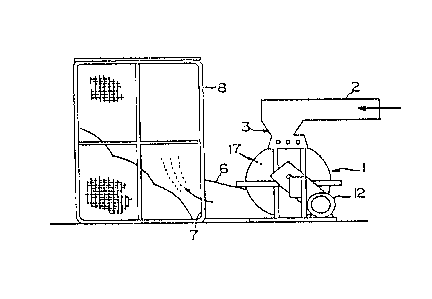Some of the information on this Web page has been provided by external sources. The Government of Canada is not responsible for the accuracy, reliability or currency of the information supplied by external sources. Users wishing to rely upon this information should consult directly with the source of the information. Content provided by external sources is not subject to official languages, privacy and accessibility requirements.
Any discrepancies in the text and image of the Claims and Abstract are due to differing posting times. Text of the Claims and Abstract are posted:
| (12) Patent: | (11) CA 1319244 |
|---|---|
| (21) Application Number: | 1319244 |
| (54) English Title: | APPARATUS FOR PRODUCING LONG TAILED NEPS |
| (54) French Title: | APPAREIL DE FABRICATION DE FIL A BOUTONS ESPACES |
| Status: | Expired and beyond the Period of Reversal |
| (51) International Patent Classification (IPC): |
|
|---|---|
| (72) Inventors : |
|
| (73) Owners : |
|
| (71) Applicants : |
|
| (74) Agent: | SWABEY OGILVY RENAULT |
| (74) Associate agent: | |
| (45) Issued: | 1993-06-22 |
| (22) Filed Date: | 1989-08-11 |
| Availability of licence: | N/A |
| Dedicated to the Public: | N/A |
| (25) Language of filing: | English |
| Patent Cooperation Treaty (PCT): | No |
|---|
| (30) Application Priority Data: | ||||||
|---|---|---|---|---|---|---|
|
Abstract of the Disclosure
The apparatus includes a housing supporting
a main rotor, the periphery of which has a plurality of
teeth and beaters which cooperate with teeth on a set
of feed rollers mounted in the housing alongside the
periphery of the main rotor. The housing has an intake
chute and a closeable discharge door, the arrangement
being such that, in use, a synthetic or
fibrous material fed to the intake chute, while the
discharge door is closed, is fed into the housing by
the feed rollers. The fibrous material is removed by
the beaters and teeth of the rotor from the feed
rollers. The fibrous material is spun in the housing
and the interaction between the teeth and the beaters
of the main rotor and the teeth of the feed rollers
causes the fibrous material to be entangled and felted
to form a plurality of long tailed neps which are
discharged from the housing when the discharge door is
opened.
Note: Claims are shown in the official language in which they were submitted.
Note: Descriptions are shown in the official language in which they were submitted.

2024-08-01:As part of the Next Generation Patents (NGP) transition, the Canadian Patents Database (CPD) now contains a more detailed Event History, which replicates the Event Log of our new back-office solution.
Please note that "Inactive:" events refers to events no longer in use in our new back-office solution.
For a clearer understanding of the status of the application/patent presented on this page, the site Disclaimer , as well as the definitions for Patent , Event History , Maintenance Fee and Payment History should be consulted.
| Description | Date |
|---|---|
| Inactive: IPC from MCD | 2006-03-11 |
| Inactive: IPC from MCD | 2006-03-11 |
| Inactive: Adhoc Request Documented | 1996-06-22 |
| Time Limit for Reversal Expired | 1995-12-24 |
| Letter Sent | 1995-06-22 |
| Grant by Issuance | 1993-06-22 |
There is no abandonment history.
Note: Records showing the ownership history in alphabetical order.
| Current Owners on Record |
|---|
| IAN D. MCFARLANE |
| JULIAN M. WATSON |
| RICHARD J. WALLS |
| WOOL RESEARCH ORGANISATION OF NEW ZEALAND (INC) |
| Past Owners on Record |
|---|
| None |